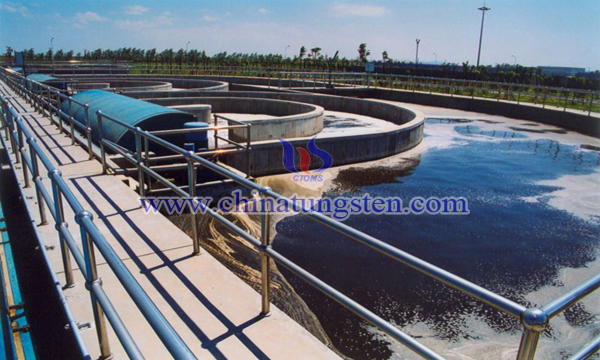Negative Silver Nano Bismuth Tungstate Composite Photocatalyst
- Details
- Category: Tungsten Information
- Published on Sunday, 09 September 2018 23:14
The global environmental pollution problem restricts the progress of human civilization. The photocatalytic degradation of environmental pollutants has attracted more and more attention because of its advantages such as low energy consumption, mild reaction conditions, simple operation and reducing secondary pollution.

In recent years, a large number of studies have shown that almost all organic pollutants can be effectively degraded, decolorized, detoxified and mineralized into inorganic small molecular substances by semiconductor photocatalysis, thereby eliminating environmental pollution and harm.
Some scholars have proposed that silver-loaded nano-particle bismuth tungstate composite photocatalyst has visible-light photocatalytic properties. To prepare high-performance silver-modified bismuth tungstate composite photocatalyst, the following schemes have been proposed:
Step 1. Bismuth nitrate solution was obtained by mixing Bismuth nitrate in 1-4 mol/L nitric acid solution for at least 30 minutes according to the mass ratio of Bismuth nitrate to nitric acid of 3-5:1. Sodium tungstate was added to deionized water in the proportion of 30-50:1. Sodium tungstate solution was obtained, and then polyvinylpyrrolidone (PVP) was added into sodium tungstate solution to stir evenly to obtain the mixed solution. The mass ratio of sodium tungstate to polyvinylpyrrolidone in the mixed solution was 1.8-2.2:1, then bismuth nitrate solution was added into the mixed solution to obtain the precursor solution, and then the precursor solution was obtained. Bismuth tungstate powder was obtained by centrifugation, washing and drying after the solution was kept in a closed state for 20-24 hours at 160-180 C and then cooled to room temperature naturally.
Step 2. According to the mass ratio of silver nitrate to barium tungstate between 0.01 and 0.03:1, the barium tungstate powder is added to a silver nitrate solution having a concentration of 0.01 to 0.1 mol/L and stirred uniformly to obtain an intermediate product. The intermediate product is dried and ground to a powder, and then the powdery intermediate product is calcined at 200 to 500 ° C for 1 to 4 hours to obtain a silver-modified barium tungstate composite photocatalyst.
Silver-modified bismuth tungstate composite photocatalyst was used to treat refractory organic compounds or heavy metal ions, such as phenol, herbicide 2,4_D, methylene blue, rhodamine B, methyl orange and chromium. Pollution elements such as ions, lead ions and mercury ions have achieved very good photocatalytic degradation.
- Tungsten Oxide Manufacturer & Supplier, Chinatungsten Online: www.tungsten-oxide.com
- Tungsten News & Prices of China Tungsten Industry Association: www.ctia.com.cn
- Molybdenum News & Price: news.molybdenum.com.cn
- Tel.: 86 592 5129696; Fax: 86 592 5129797; Email: sales@chinatungsten.com



 sales@chinatungsten.com
sales@chinatungsten.com